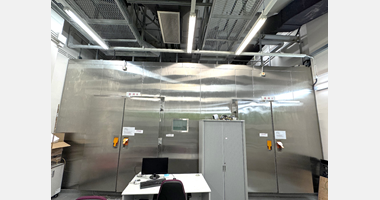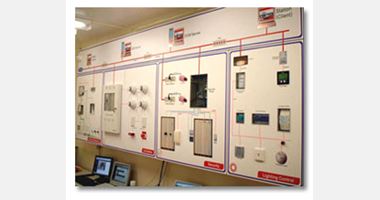Cyber Range Simulator System for Security Training

Specifications
Major Functions / Key Features
A cyber range simulator system (hereafter the “system”) is a network-based virtualization system for cybersecurity training in real-life attack/defence scenarios. It mainly consists of three parts: hardware/server, web portal, and preconfigure scenarios. The specifications on these parts are separately listed below.
Hardware/Server
- The hardware/server, which supports all or at least the main functions of the system, must be physically hosted in-house.
- The server, preferably an enterprise-grade rack server, should be able to support at least 50 users training in the system concurrently.
Web portal
- The web portal is the entry point of all users, which consists of a teacher’s dashboard, a teacher’s main panel, and a student’s main panel.
- Teacher’s dashboard:
- Real time score/statistics display of students’ progress in the attack/defence scenarios.
- Teacher’s main panel:
- Grant system access to students and other teachers.
- Form students into teams for those multi-user preconfigured scenarios
- Schedule a cyber range lab with preconfigured scenario
- View historic cyber range lab results of all students
- Student’s main panel:
- View and access scheduled cyber range lab
- View one’s historic lab results
- Preference will be given to vendors whose portal can integrate with Security Information and Event Management (SIEM)
Preconfigured scenarios
- A preconfigured scenario typically consists of one or multiple virtual images (VMs) deployed in a virtualized network.
- The system must have at least 5 scenarios, among which 2 are entry-level (for high-school students), 2 are mid-level (for students with 1 year of security training), and 1 is advanced-level (for students with 2+ years of security training).
- All scenarios, especially those entry-level ones, must be detailed documented for students to practice on their own.
- At least 1 entry-level or mid-level scenario must involve blue team interaction with SIEM.
- Preference will be given to vendors who support customizable scenario (including network builder, virtual image importer, flag designer, etc).
- Preference will be given to vendors whose preconfigured scenarios contain both attack & defence modules in a single scenario.
- Preference will be given to vendors whose systems can monitor or grade students’ progress by automatically checking if some commands are used or conditions are met.
- Preference will be given to vendors who provide supplementary lab exercises in or beyond these scenarios.
Location
CD514Restriction
Only available to information security programme students or students who take information security-related subjects
Other Information
Manufacturer: Keysight Technologies
Model:
Category: Computer studies/science - incl. information technology
Owned by: Department of Electrical and Electronic Engineering
Contacts
Mr Kong Chun Ho, Hopkins
Department of Electrical and Electronic Engineering
- 34003557
- hopkins-chun-ho.kong@polyu.edu.hk
Related Equipment






